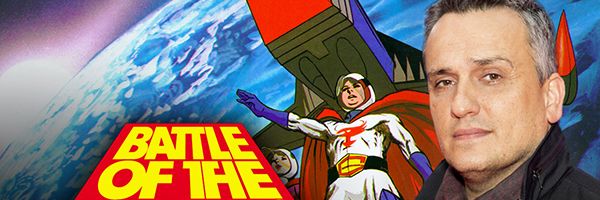Doctor Omega
Member: Rank 10

Battle of the Planets is an American adaptation of the Japanese anime series Science Ninja Team Gatchaman (1972).[2] Of the 105 original Gatchaman episodes, 85 were used in the Battle of the Planets adaptation, produced by Sandy Frank Entertainment. The adaptation was generally faithful to the plot and character development of the original Gatchaman series, but significant additions and reductions were made in order to increase appeal to the North American television market of the late 1970s, as well as avoid controversy from parents; these included the removal of elements of graphic violence and profanity.[3]
As of June 2013, Sentai Filmworks have licensed[4] the Gatchaman franchise. An oft-delayed CGI film based on the franchise, Gatchaman, last slated for a 2011 release from Warner Bros., was officially canceled in June 2011. However, a live-action Gatchamanfeature film was released in Japan in August 2013.
Origins
In April 1977 Sandy Frank attended the MIP-TV conference in Cannes. It was here Frank first encountered the Japanese animation ‘’Gatchaman’’ from producer Tatsunoko Production run by the Yoshida brothers.[5] Frank committed to release the series in the U.S. after he saw the success of Star Wars in May 1977.[6] Battle of the Planets is the title of American adaptation of this series created by Frank. Frank authorized new footage and hired writers to add dialogue to fit the look of the animation, without reference to original scripts.[6] Of the 105 original Gatchaman episodes, 85 were used in the Battle of the Planets adaptation produced by Sandy Frank Entertainment in 1978.
Key changes in the adaptation
The Battle of the Planets adaptation differs significantly from Gatchaman.[7] The difference is due to heavy editing made to make the show appealing to the audience in the United States by removing controversial elements (i.e. graphic violence, profanity, nudity and transgenderism) while adding elements reminiscent of the feature film Star Wars, which was popular at the time. In fact the name "Battle of the Planets" was an attempt to associate itself with that popularity of Star Wars. While the original Gatchaman was earthbound, dark-toned, and environmentally themed, the adaptation morphed it into a kid-friendly outer space show with robot characters, although some environmental themes were kept, and this is also why the other planets to which G-Force traveled on missions looked very much like Earth. Setting, violence, objectionable language, and most character fatalities were altered or eliminated by cutting scenes, dubbing, and explanatory voiceovers (for instance, claiming that the city had been evacuated before a battle scene that would show the incidental destruction of buildings and houses, as well as explaining away the destruction of the Earth armies and air forces as being robot tanks and fighter planes).[8][9]
One of the most notable changes in the BotP adaptation involves the character Keyop (Jinpei in Gatchaman), who picked up a bizarre verbal tic of stuttering, chirping, and burbling every time he started to speak. There was a longstanding fan rumor that this was done because the original character spoke using much profanity and that Keyop's excess mouth motion would cover up deleting the words. This was not true, as demonstrated by the existence of an unedited Gatchaman version released by ADV Films in the USA, in which Keyop rarely if ever used profanity. The in-story explanation for Keyop's unique manner of speech is that he is an artificial life form with a speech impediment because of slightly defective genetic engineering.[10]
The main villain, known as Zoltar in BotP, had an unusual background due to the hermaphroditic nature of the original Berg Katse character. In an episode where Katse's female half was featured (BotP title: "The Galaxy Girls"), she was introduced as a separate character, Zoltar's sister, for BotP. (A hint of her actual nature was retained in the name she used when masquerading as a human, Mala Latroz—"Latroz" is an anagram of "Zoltar.")[10]
To compensate for the other differences, a robot named 7-Zark-7 performed explanatory voiceovers and light comic relief, which not only padded the time lost from editing but also filled in the gaps in the story line. This device bears the influence of contemporary Star Wars film, with 7-Zark-7 having a visual appearance not dissimilar from R2-D2, and a somewhat campy personality in the style of C-3PO. Notionally, 7-Zark-7 ran the undersea monitoring station Center Neptune, from where he received information regarding incoming threats to Earth and relayed that information to G-Force. Zark and other added characters, such as 1-Rover-1, Zark's robotic dog (who could hover from one side of the control room to the other by spinning his tail like a propeller, Muttley-style) and Susan (the early-warning computer whose sultry feminine voice often sent Zark into paroxysms) added to the cartoon's youth appeal. Some additional footage was also animated showing G-Force members (using their Gatchaman model sheets) interacting with Zark, helping his addition blend more smoothly into the existing Gatchaman footage (although there is a clear difference in quality between the Zark and the Gatchaman animation).
Last edited:


